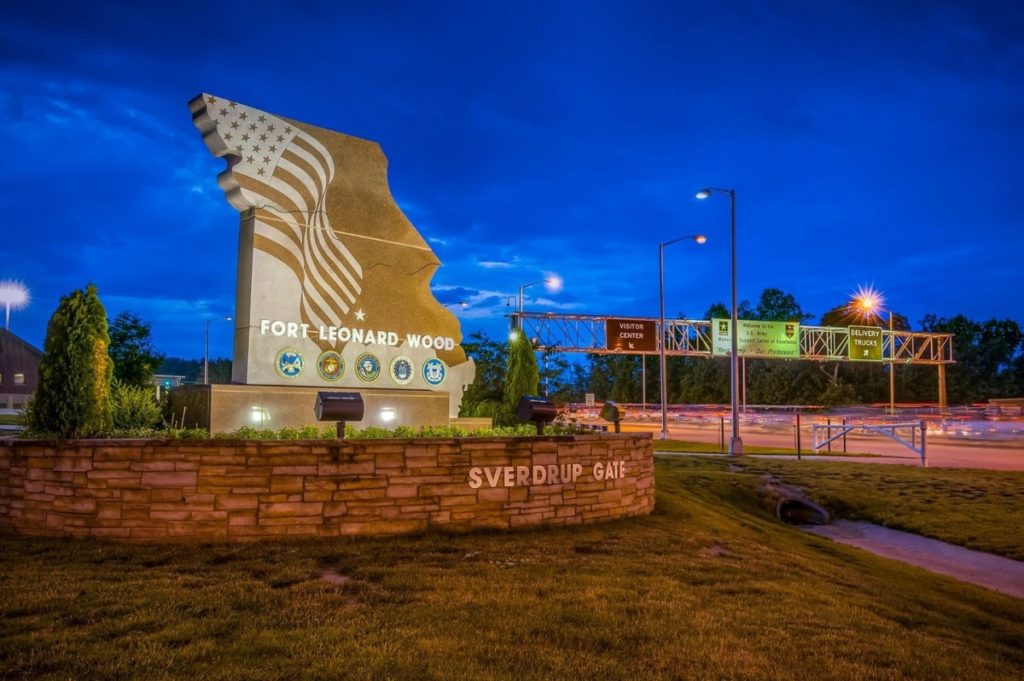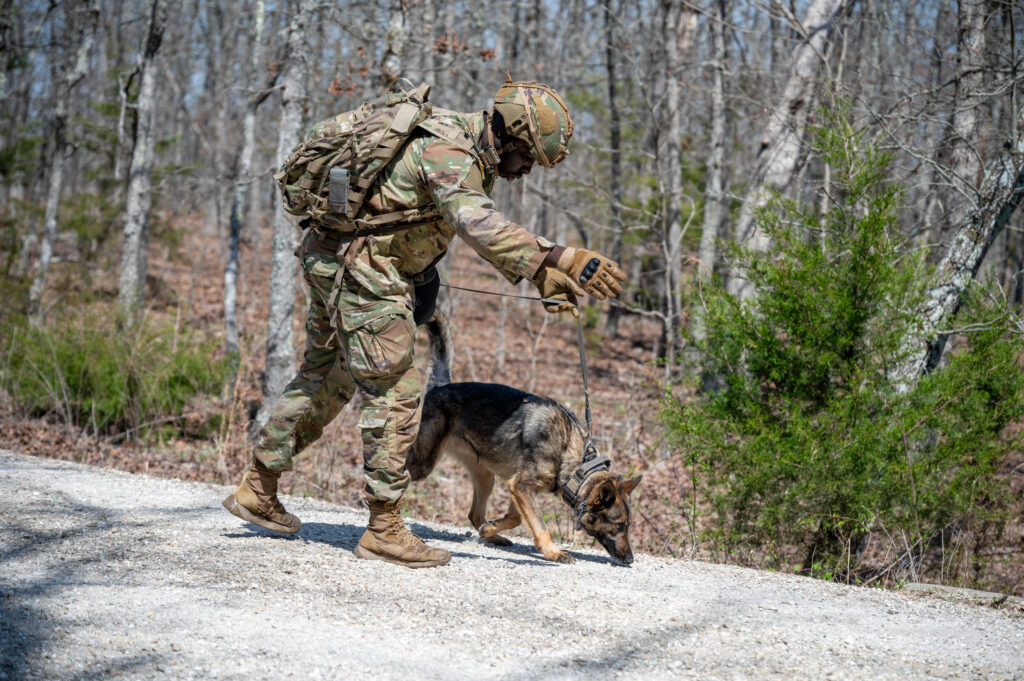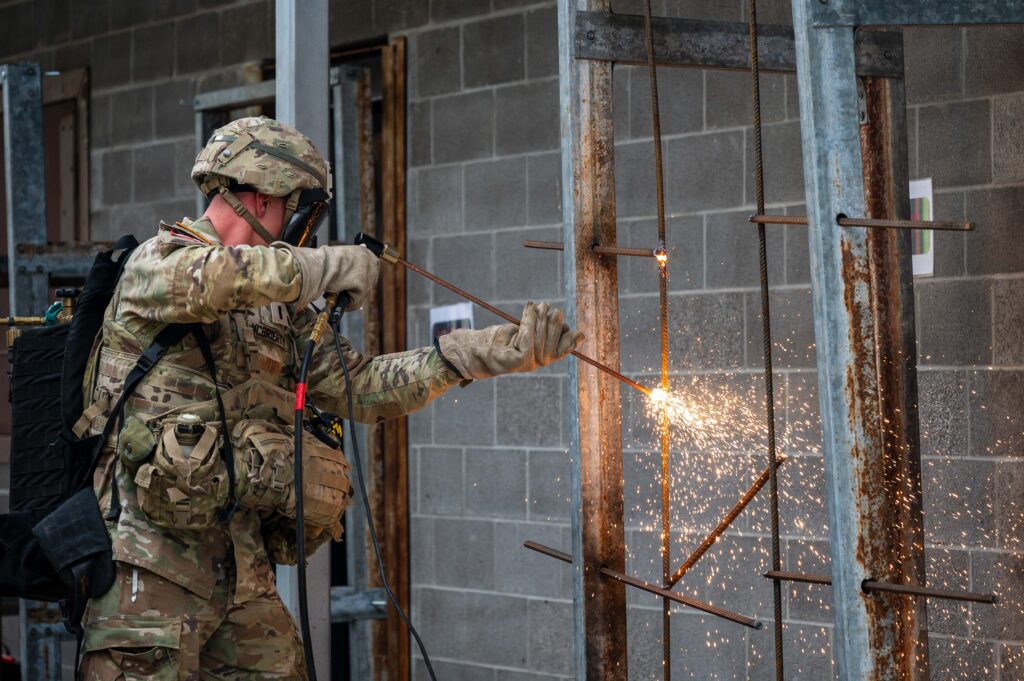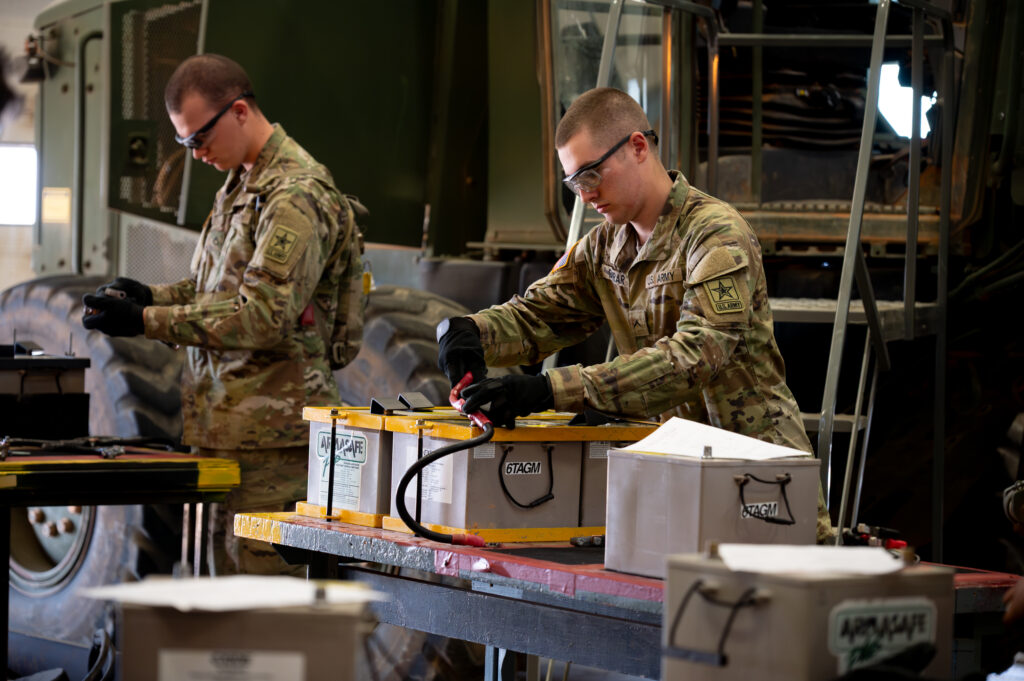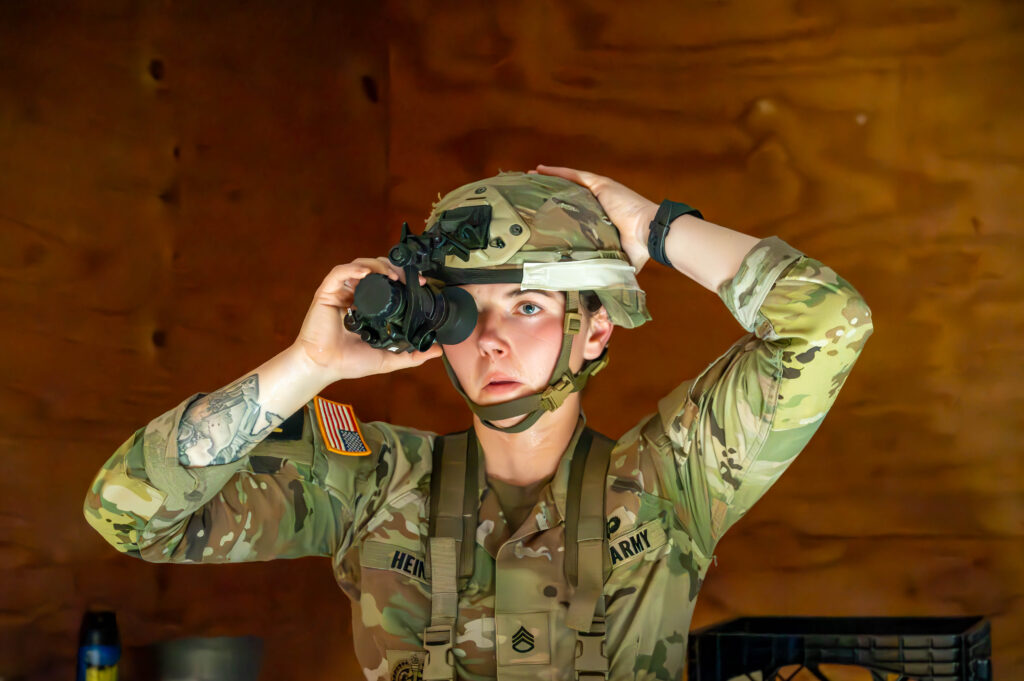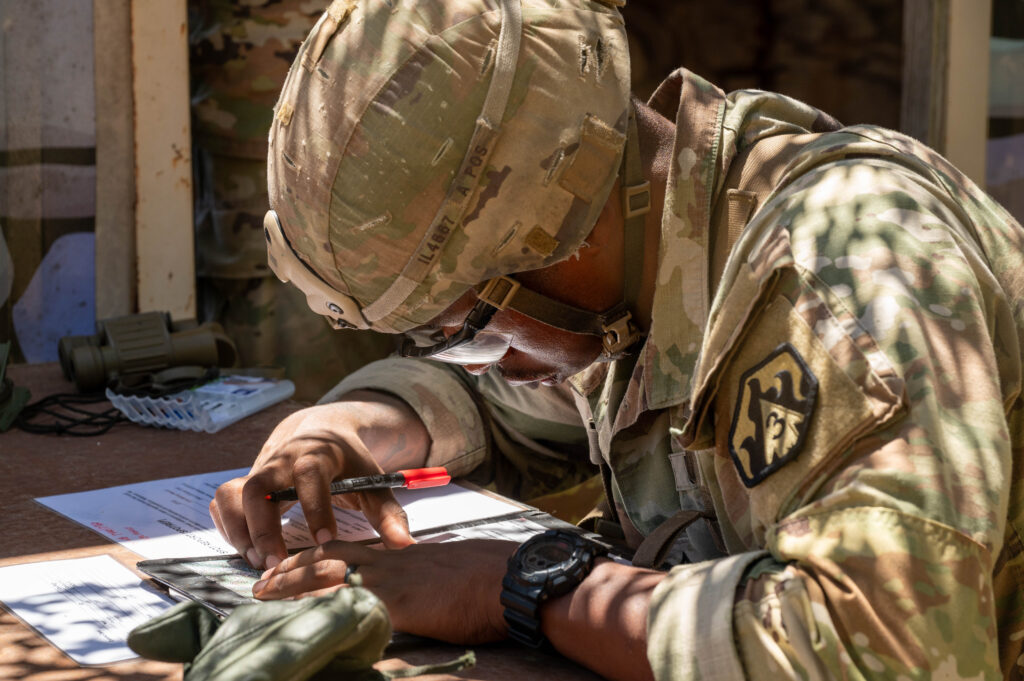By Sam Campbell
Public Affairs Office
FORT LEONARD WOOD, Mo. (Feb. 7, 2019) — The U.S. Army Military Police School at Fort Leonard Wood held the high-speed, evasive driving portion of its third Emergency Vehicle Operator Course Jan. 31 at the Basic Military Police Training Division.
EVOC training, which is designed to teach Soldiers how to drive safely in fast-paced, emergency situations, took place over a period of three days, following a classroom-to-car methodology.
“We have 18 different exercises that cover steering, braking, and reverse driving techniques,” said Sgt. 1st Class James Winn, Emergency Vehicle Operations and Vehicle Dynamics command chief. “We teach (Soldiers) to brake as they’re coming in to the curve, and we teach them release points before they get into that curve, so they maintain control.”
He said 31K, or military working dog handlers, in Advanced Individual Training who participated in the course, have not received this type of training before.
“They’ve never been exposed to this type of driving, so we started off with a crawl, then walk, then run phase to show them the obstacles,” Winn said.
In fact, some trainees only recently obtained their civilian driver’s license, highlighting the importance of the classroom instruction they receive prior to hopping behind the wheel.
“We discuss different aspects such as state laws, local policies, even host nation laws, when we are overseas,” Winn said. Other topics covered include the police vehicle, its equipment and driving quickly but safely in hazardous weather conditions.
The “run” portion of EVOC training is the most difficult with drivers reaching speeds of 35 mph while navigating narrow traffic cones.
“At that speed, because it’s condensed, you still get the effects of the pitch and the roll that (the movement) has on the vehicle,” he said.
Spc. Megan Wells, Company C, 701st Military Police Battalion, course participant, said the training is very different from civilian driving.
“It’s very jerky, not because you’re not in control of the vehicle but because you have to maintain control while maneuvering through the obstacles,” she said. “In a normal civilian world, you’re going to be driving a lot more cautiously through these obstacles if you had to, and you probably wouldn’t have to get up to the speeds that we do, but with those speeds, you really have to just take the movement of the vehicle and just go with it.”
Wells elaborated on the significance of keeping a level head during the exercises.
“You kind of have to find the right mindset,” she said. “You’re focused on what you’re doing and you’re not paying attention to distractions as much, but you’re also making sure you’re aware of anything that’s around that’s unusual.”
Course instructors said the intensity of the course is matched by its enhancement in training effectiveness.
In the past, EVOC training was conducted once 31K Soldiers completed AIT and reached their first duty station. With the training now being done at Fort Leonard Wood, Soldiers will arrive at their next assignment better prepared, course instructors said.
“Having that course being conducted here, that will expedite their training once they get into the field, so they can focus on the military working dog aspects instead of taking three days to do driving,” said Sgt. 1st Class Jason Villafane, USAMPS course manager.
Winn echoed the sentiment. “They’re qualified to drive an emergency vehicle now,” he said. “So it takes less time for that first unit to get them (ready).”
In terms of personal appeal, Wells said the course was as fun as it was intense. “You’re pushing the vehicle and yourself to the limits on the course,” she said. “You feel like you’re the good guy chasing the bad guy or maybe the bad guy trying to get away — it definitely feels movie-like.”
Wells said the training also has given her confidence in her professional ability.
“It makes me feel more comfortable going into my job,” she said. “Once I get to my unit, I feel like I’m going to be (ready) if I have to do any of these kinds of maneuvers out there.”

Spc. Megan Wells drives the course at full “run” speed, 35 mph. Photo by Sam Campbell.
-30-
About Fort Leonard Wood
Fort Leonard Wood is a thriving and prosperous installation that has evolved from a small basic training post more than 75 years ago to a premier Army Center of Excellence that trains more than 82,000 military and civilians each year.
Fort Leonard Wood is home to the U.S Army Maneuver Support Center of Excellence and three U.S. Army schools: the U.S. Army Engineer School; U.S. Army Chemical, Biological, Radiological, and Nuclear School; and the U.S. Army Military Police School. In addition to training engineer, CBRN and military police specialties for the Army, Fort Leonard Wood also provides gender-integrated in-processing and Basic Combat Training for new Soldiers.
Fort Leonard Wood also hosts and trains with the largest Marine Corps and Air Force detachments on any Army installation as well as a large Navy construction detachment.
More information about Fort Leonard Wood is at: https://home.army.mil/wood/index.php/about/mission.
